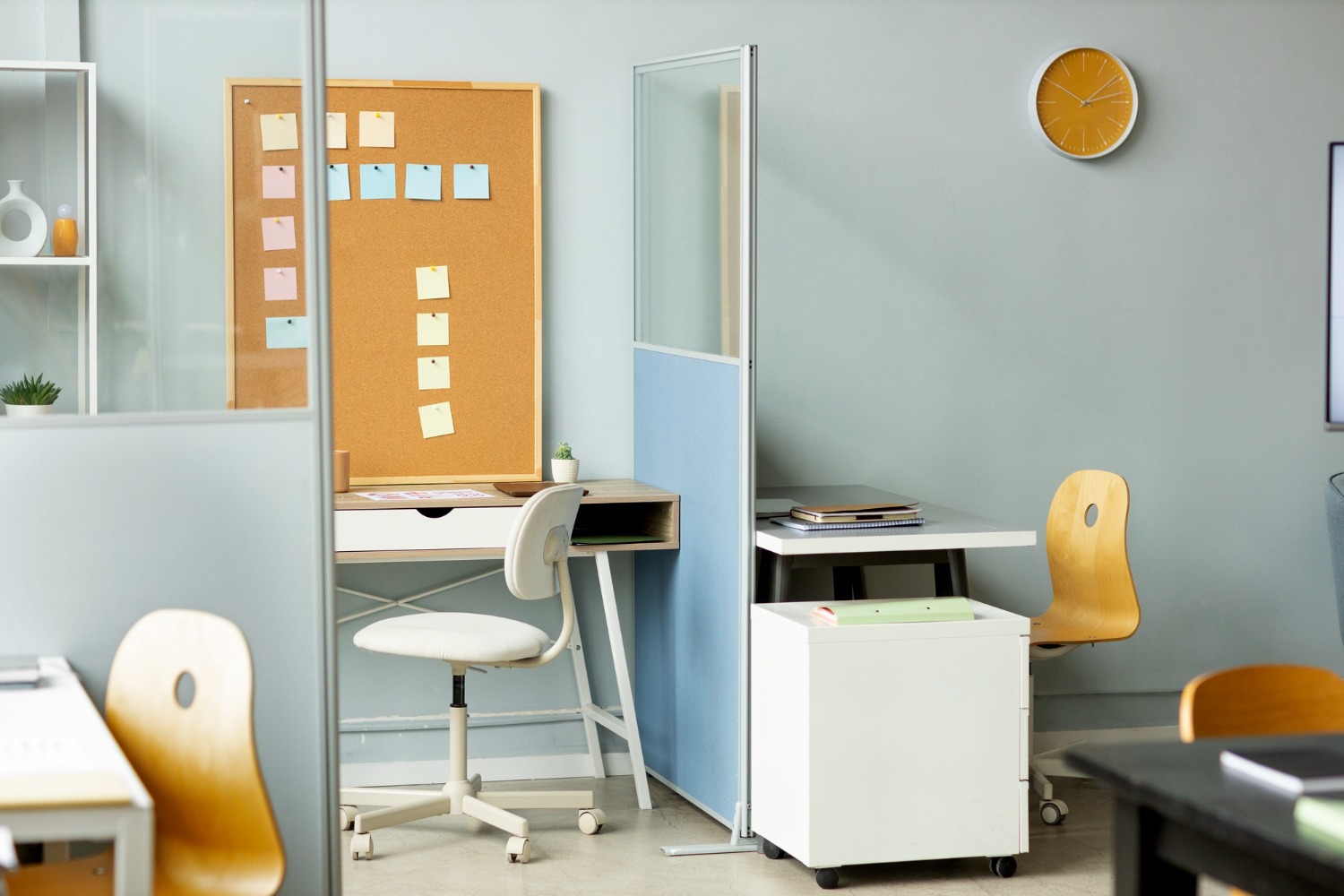In the modern workplace, collaboration is more than just a buzzword — it’s the engine that powers innovation, problem-solving, and organizational growth. While tools like Slack, Zoom, and project management software often dominate the conversation about teamwork, the influence of Physical Space is equally profound. The way an office is designed, the arrangement of desks, the availability of shared areas, and even the placement of doors can subtly shape the way employees connect, communicate, and create.
The question isn’t whether Physical Space matters; it’s how deeply it affects collaboration — and whether your organization is consciously designing spaces that foster the best outcomes. In this article, we’ll explore the psychology, design principles, and strategic decisions that link physical environments to team performance.
The Psychology Behind Physical Space
Human beings are sensory creatures. Our brains constantly process environmental cues that affect our mood, focus, and willingness to interact. In a workplace, Physical Space sends messages about hierarchy, accessibility, and openness.
Open layouts, for example, are often designed to encourage spontaneous interaction. The absence of walls and partitions can lower perceived barriers between departments, leading to more cross-functional conversations. On the other hand, such designs can also increase distractions, creating a delicate balance between collaboration and concentration.

Research in environmental psychology suggests that Physical Space not only shapes behavior but also affects how people perceive their own role within the team. Spacious, well-lit areas with comfortable seating can make employees feel more valued, while cramped, cluttered offices can lead to stress and reduced engagement.
How Physical Space Shapes Communication
When discussing collaboration, it’s impossible to separate communication from Physical Space. Proximity plays a huge role — people sitting within 10 meters of each other are far more likely to exchange ideas than those further apart.
Shared spaces like coffee stations, lounges, or breakout areas become natural hubs for casual interactions. These seemingly unplanned conversations can spark innovative ideas or solve problems faster than formal meetings. But the design of such spaces matters:
- Visual openness encourages approachability.
- Comfortable furniture supports longer, more engaged discussions.
- Noise control helps maintain focus without discouraging social interaction.
Without careful design, even a well-intentioned open space can backfire, leading to noise fatigue, reduced privacy, and disengagement.
Balancing Collaboration and Focus
The ideal Physical Space doesn’t just throw people together — it offers a spectrum of environments suited for different tasks. Employees need areas for active group work as well as quiet zones for deep focus.
Some companies are adopting “activity-based working” models, where no one is tied to a single desk. Instead, employees choose their environment based on the task at hand:
- Collaborative zones for brainstorming sessions.
- Quiet rooms for concentrated work.
- Informal lounges for casual chats.
This flexibility acknowledges that collaboration doesn’t happen in a single format. Sometimes the best way to work together is by stepping away from each other, recharging in solitude, and returning with fresh perspectives.
Physical Space as a Cultural Signal
The layout and design of Physical Space is more than a logistical decision — it’s a reflection of company culture. An office with enclosed executive suites and small cubicles for everyone else signals hierarchy and formality. By contrast, a workspace where managers sit alongside their teams suggests openness and equality.
Design decisions can also communicate the organization’s priorities. A company that invests in large communal areas and meeting rooms may be signaling that teamwork is central to its mission. In contrast, an organization that prioritizes individual workstations might be emphasizing independent productivity.
Culture and Physical Space feed into each other. A culture that values collaboration will naturally design spaces that encourage it, and those spaces will reinforce the culture over time.
The Role of Technology in Physical Space

While Physical Space might seem like a purely physical consideration, technology has become inseparable from workplace design. Hybrid work models mean that office spaces must support both in-person and remote participants seamlessly.
This requires investment in:
- High-quality audio-visual equipment.
- Meeting rooms optimized for video calls.
- Flexible seating arrangements that make it easy to include remote workers.
A poorly equipped meeting room can undermine collaboration, making remote colleagues feel excluded and reducing the effectiveness of group work. On the other hand, well-integrated technology ensures that Physical Space works as a bridge, not a barrier.
The Link Between Proximity and Innovation
For decades, researchers have explored how physical closeness fuels creative breakthroughs. Several landmark studies confirm the idea: innovation flourishes when people work near each other. The Massachusetts Institute of Technology (MIT) discovered that collaboration frequency plummets when employees are more than 50 meters apart. This isn’t a coincidence — it’s a measurable, repeatable phenomenon tied to the dynamics of general space in workplaces.
Why Physical Distance Matters
When individuals are far apart, interactions become planned rather than spontaneous. And while scheduled meetings have value, they lack the raw creative energy of unplanned encounters. It’s in those casual, unscripted moments — a hallway greeting, a quick chat at the coffee machine — that the seeds of innovation are planted. The configuration of general space plays a crucial role in enabling these interactions.
Designing for “Collisions”
The concept of “collisions” refers to unplanned, chance meetings that lead to idea exchanges. Work environments that are intentionally designed to encourage movement — with central staircases, shared kitchens, and open pathways — naturally increase these collisions. When general space is open, navigable, and inviting, employees from different departments are more likely to cross paths, sparking conversations that wouldn’t otherwise happen.
Lessons from Pixar’s Headquarters
When Steve Jobs designed Pixar’s headquarters, he insisted on a central atrium to ensure employees from every discipline intersected regularly. This single architectural decision made the building’s general space a catalyst for collaboration. Jobs believed — and history proved him right — that creativity often emerges from random, cross-disciplinary encounters.
From Architecture to Culture
The arrangement of general space is more than an architectural choice; it’s a cultural strategy. Open layouts, common areas, and shared resources tell employees that interaction is encouraged and valued. This alignment of physical design with company culture reinforces the belief that innovation is a team sport.
The Takeaway for Modern Workplaces
Whether in tech startups, research labs, or creative agencies, the lesson is clear: proximity matters. By rethinking general space to foster human connection, organizations can cultivate an environment where ideas flow freely and breakthroughs become the norm.
Designing for Different Collaboration Styles
Collaboration isn’t one-size-fits-all. Some teams thrive on constant dialogue, while others need structured, scheduled interactions. Effective Physical Space recognizes these differences and accommodates them.
For example:
- Creative teams may benefit from open studios with shared worktables and walls for displaying works-in-progress.
- Engineering teams might prefer semi-enclosed pods to reduce noise while allowing quick exchanges.
- Sales teams could use flexible spaces for role-playing and client presentations.
The key is to understand how each department works best and provide the right mix of spaces.
The Hidden Costs of Poor Space Planning
When Physical Space is poorly planned, the effects ripple through the organization. Collaboration can suffer if meeting rooms are always booked, workstations are too cramped, or employees struggle to find quiet areas.
These issues can lead to:
- Lower job satisfaction.
- Reduced productivity.
- Increased turnover.
Employees may resort to working remotely more often, not because it’s more productive, but to avoid an uncomfortable or chaotic office environment.
Measuring the Impact of Physical Space
Organizations often measure collaboration in terms of project completion or meeting frequency, but Physical Space deserves its own metrics. Employee surveys, space utilization data, and observational studies can reveal whether the layout is helping or hindering teamwork.
Key indicators to watch include:
- Frequency of cross-departmental interactions.
- Employee satisfaction with work environments.
- Utilization rates of collaborative versus quiet spaces.
Making changes based on these insights ensures that the investment in Physical Space yields real returns in performance and innovation.
Future Trends in Workplace Space Design
As work becomes more hybrid and digital, Physical Space will need to be more adaptive. Future workplaces may feature modular furniture, mobile partitions, and on-demand meeting pods that can be reconfigured quickly.
Sustainability will also play a bigger role, with natural lighting, biophilic design, and energy-efficient layouts becoming standard. At the same time, offices will need to be more experiential — offering employees something they can’t get working from home, whether that’s specialized equipment, social energy, or a unique company culture.
Final Thoughts
Physical Space is not a passive backdrop to workplace collaboration — it’s an active force shaping how, when, and why people connect. From the psychology of proximity to the subtle cultural messages embedded in layout choices, the environment we work in profoundly influences our ability to share ideas, solve problems, and innovate.
Organizations that consciously design their spaces for collaboration will not only see more effective teamwork but also create workplaces where employees feel engaged, supported, and inspired. In an era where talent retention and innovation are competitive advantages, investing in Physical Space may be one of the smartest strategic moves a company can make.
Andrea Balint is a writer and researcher focused on human behavior, workplace psychology, and personal growth. Through her work at CareersMomentum, she explores how mindset, leadership, and emotional intelligence shape modern careers. With a background in communication and HR development, she transforms complex ideas into practical insights that help readers build clarity, confidence, and professional purpose.
